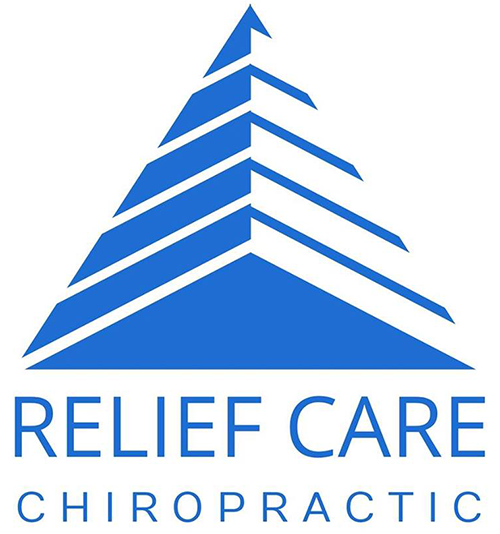Chiropractic Sports Rehab & Physical Therapy Journal Blog
Understanding How Laser Therapy Works
The Science Behind Laser Therapy
Laser therapy, also known as photobiomodulation, combines light energy with the body’s tissue cells, stimulating biological mechanisms that cause healing and pain relief.
Different Types of Laser Therapy
Benefits of Laser Therapy
Pain Management
One of the primary benefits of laser therapy is its ability to reduce pain and inflammation by promoting the release of ATP, cellular gasoline. Whether it’s chronic pain or sports rehab, laser therapy offers a drug-free solution.
Accelerated Healing
By enhancing cellular metabolism and increasing blood flow to the affected area, laser therapy accelerates the body’s natural healing process. This leads to faster recovery times for soft tissues, bony fractures, and even post-surgical, to help people get back to living.
Reduced Inflammation
Inflammation is a common factor in many health conditions, from arthritis to heart disease. Laser therapy helps combat inflammation by improving the immune response to swelling.
Applications of Laser Therapy
Physical Therapy
Laser therapy is as a valuable tool, along with exercise and manual therapy to address musculoskeletal injuries like: sprains, strains, and osteoarthritis.
Sports Medicine
Athletes and sports enthusiasts often turn to laser therapy to rehab from sports-related injuries and enhance performance. Whether it’s a torn ligament or a muscle strain, laser therapy offers a non-invasive approach to getting back in the game faster.
Dermatology
Laser therapy can also treat skin conditions, including acne, scars, and psoriasis by promoting collagen production to improve skin texture and appearance.
Safety and Side Effects
Safety Precautions
Laser therapy is generally considered safe when administered by trained professionals, however precautions include wearing protective eyewear and proper use of the device.
Across the globe, countless individuals have experienced the transformative effects of laser therapy firsthand. From chronic pain sufferers to elite athletes, their stories serve as a testament to the power of this innovative treatment modality.
Clinical Studies and Research Findings
Furthermore, extensive research and clinical studies support the efficacy of laser therapy in treating a wide range of conditions. From randomized controlled trials to systematic reviews, the evidence continues to mount in favor of laser therapy as a safe and effective therapeutic option.
Cost and Accessibility
Insurance Coverage
One common concern among individuals considering laser therapy is the cost and whether it’s covered by insurance. While coverage may vary depending on the provider and the specific condition being treated, many insurance plans now include laser therapy as part of their coverage options.
Affordability and Availability
In addition to insurance coverage, the affordability and accessibility of laser therapy have improved in recent years, thanks to advancements in technology and increased demand. Many healthcare facilities and wellness centers now offer laser therapy services at competitive rates, making it more accessible to a broader range of individuals.
Comparing Laser Therapy to Alternative Treatments
Traditional Medicine
Compared to traditional treatment modalities such as medication or surgery, laser therapy offers several advantages, including fewer side effects, shorter recovery times, and reduced reliance on pain medications.
Medication
While medications may provide temporary relief from symptoms, they often come with a host of side effects and long-term risks. Laser therapy, on the other hand, addresses the underlying cause of the problem, promoting healing from within without the need for drugs.
Surgery
For many individuals facing the prospect of surgery, laser therapy offers a less invasive alternative that can achieve comparable results without the risks and complications associated with surgical procedures.
Future Trends in Laser Therapy
Advancements in Technology
As technology continues to evolve, so too does the field of laser therapy. From portable handheld devices to cutting-edge laser platforms, the future holds promise for even more precise and effective treatment options.
Emerging Applications
Furthermore, researchers are exploring new applications of laser therapy beyond the realms of pain management and tissue repair. From neurological disorders to metabolic conditions, the potential uses of laser therapy are vast and multifaceted.
Integration with Other Therapies
Complementary Treatments
Laser therapy is often used in conjunction with other complementary therapies such as acupuncture, chiropractic care, and massage therapy to enhance overall treatment outcomes and promote holistic healing.
Multidisciplinary Approaches
In multidisciplinary healthcare settings, laser therapy serves as a valuable tool for collaborative treatment approaches that address the diverse needs of patients from a holistic perspective.
Myths and Misconceptions
Debunking Common Myths
Despite its growing popularity, laser therapy is still surrounded by myths and misconceptions. From concerns about safety to skepticism about its efficacy, it’s essential to separate fact from fiction and educate the public about the real benefits of laser therapy.
Clarifying Misinformation
By providing accurate information and dispelling myths, healthcare providers can help individuals make informed decisions about their healthcare options and feel confident in choosing laser therapy as part of their treatment plan.
Tips for Maximizing the Benefits
Follow-Up Care
After completing a course of laser therapy, it’s essential to follow up with your healthcare provider regularly to monitor your progress and make any necessary adjustments to your treatment plan.
Lifestyle Adjustments
In addition to laser therapy sessions, incorporating healthy lifestyle habits such as regular exercise, proper nutrition, and stress management can further enhance the benefits of treatment and promote overall wellness.
Seeking Professional Advice
Consulting Healthcare Providers
If you’re considering laser therapy as a treatment option, it’s crucial to seek guidance from qualified healthcare providers who can assess your condition and recommend the most appropriate course of action.
Finding Certified Practitioners
When choosing a laser therapy provider, be sure to inquire about their credentials and experience to ensure that you’re receiving treatment from a qualified and certified practitioner.
Conclusion
In conclusion, laser therapy offers a safe, effective, and non-invasive approach to wellness and recovery for a wide range of conditions. From pain management to tissue repair, its versatile applications and proven benefits make it a valuable tool in the modern healthcare arsenal. By understanding how laser therapy works, exploring its diverse applications, and dispelling myths and misconceptions, individuals can make informed decisions about incorporating laser therapy into their treatment plans.
FAQs
- Is laser therapy painful?
- Laser therapy is generally well-tolerated and pain-free. Some individuals may experience mild discomfort or warmth at the treatment site, but this typically subsides quickly.
- How many laser therapy sessions are needed?
- The number of sessions required depends on the specific condition being treated and individual response to treatment. Your healthcare provider will develop a customized treatment plan based on your needs and goals.
- Is laser therapy covered by insurance?
- Many insurance plans now include coverage for laser therapy, especially for conditions where it has been proven to be effective. However, coverage may vary depending on the provider and specific policy.
- Are there any side effects of laser therapy?
- While rare, some individuals may experience mild side effects such as redness, swelling, or discomfort at the treatment site. These effects are usually transient and resolve shortly after the session.
- How long does it take to see results from laser therapy?
- The timing of results varies depending on the condition being treated and individual response to treatment. Some individuals may experience improvements after just a few sessions, while others may require more time to notice significant changes.



Contact Information
Phone: (989) 832-2349
Address: 2525 Washington St STE 500 Midland, MI 48642
Business Hours
- Mon, Tue, Thu, Fri
- - -
- Wednesday
- - -
- Sat - Sun
- Closed






